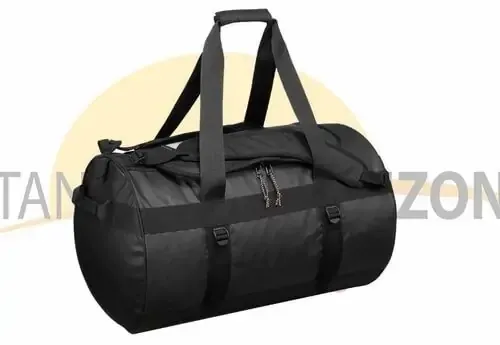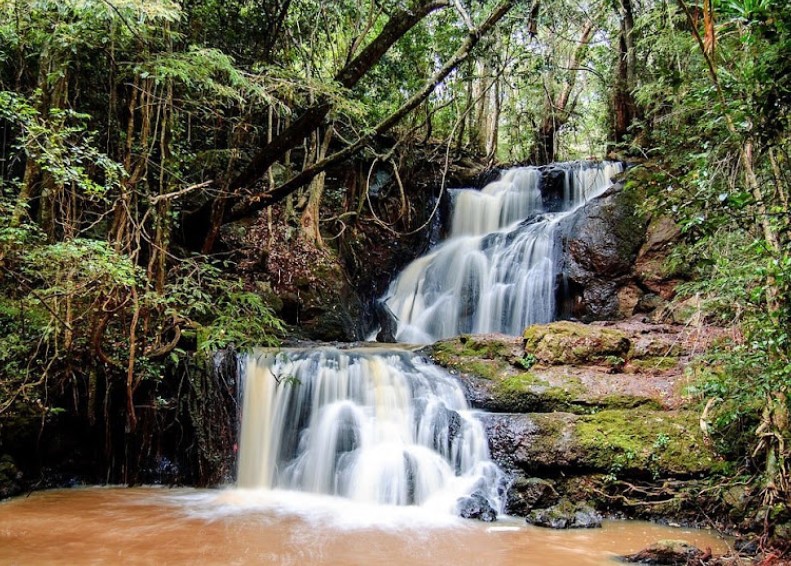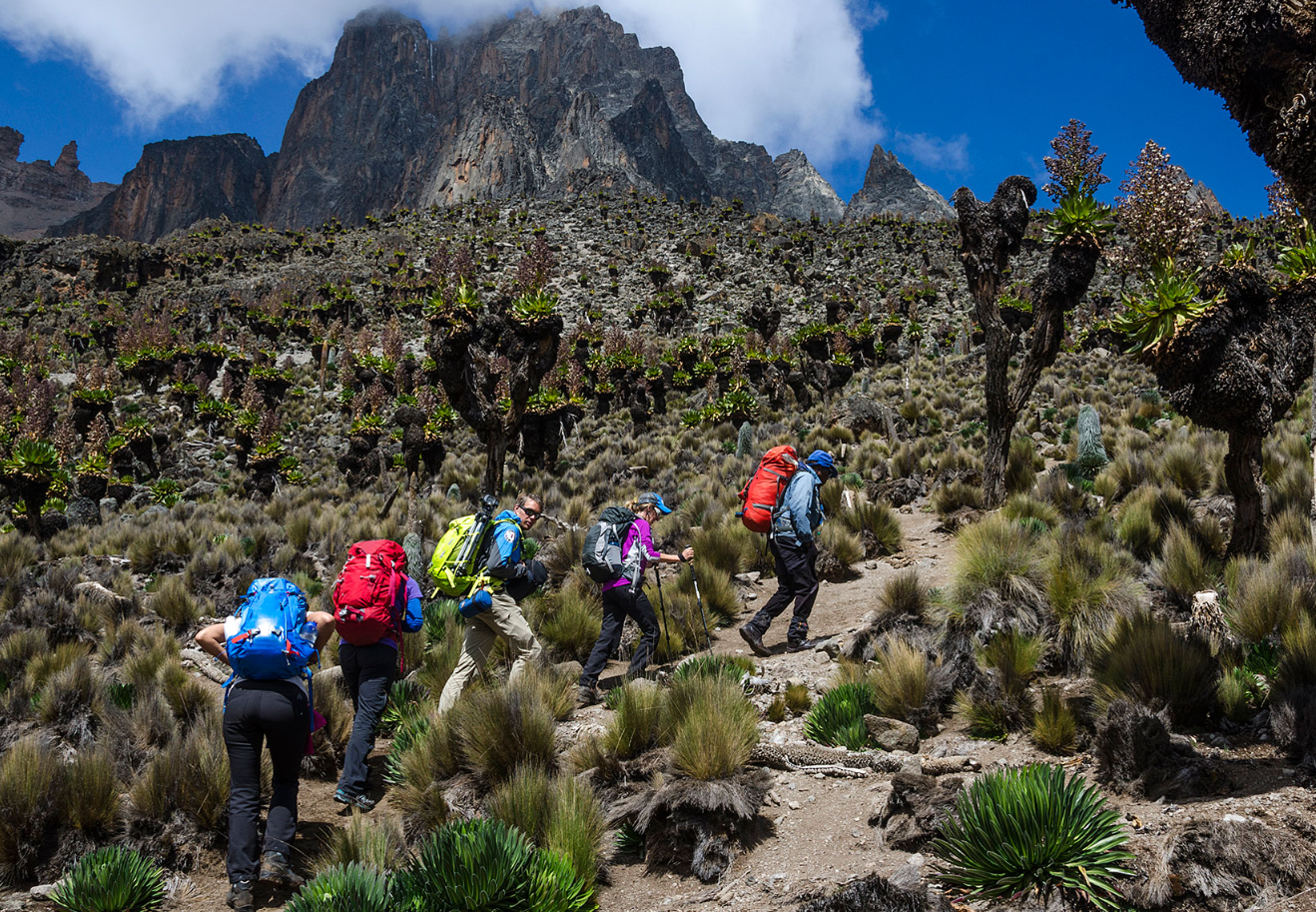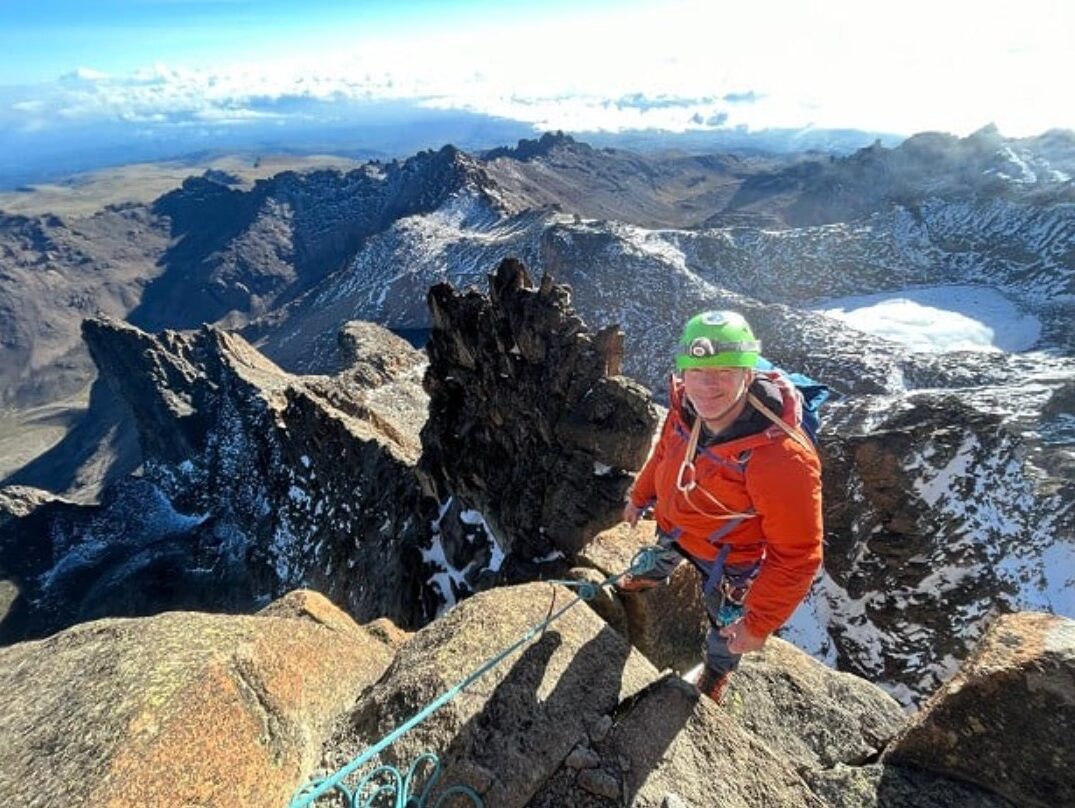Climbing Gear List – Which Gear Do I Need to climb Mount Kenya?
Climbing Mount Kenya is an adventure – a physical and mental challenge as you are crossing different climate zones and facing changing weather conditions.
Everyday on the mountain will be different and the weather can change anytime. All our climbs start in a mild forest zone that will turn into a rough, dry area before reaching the arctic zone with temperatures below -25 °C (-13 °F). Beside preparing yourself physically and mentally, having the right equipment is essential for your success!
Kenya Horizon Safaris will assist you to choose the right gear for your climb as we have helped thousands of successful climbers before. We have prepared a detailes Gear List for you that will show you all that you need from the Park Gates, all the way to the summit.
The Right Gear for Climbing Mount Kenya: A Complete Guide
Climbing Mount Kenya, Africa’s second-highest mountain, is a thrilling adventure for nature lovers, hikers, and mountaineers. Whether you are planning to explore its stunning hiking trails or embark on the more technical climbing routes to reach the summit, being properly equipped is essential. The right gear not only ensures your safety but also enhances your experience, making your Mount Kenya climb as comfortable and enjoyable as possible.
It is important to understand that there are 2 main options to climbg Mount Kenya:
- Hiking Routes – don’t require technical climbing equipment
Routes: Chogoria Route, Sirimon Route, Naro Moru Route, Timau Route, Kamweti Route, Meru Route, Burgumet Route, The Traverse Route - Technical Routes – require technical climbing experience & equipment
Batian & Nelion Route
Let us first take a look at the general packing recommendations for ALL routes:
Your Mount Kenya Gear will contain 2 separate bags:
- Your Daypack
In your Daypack you will only carry items that you need to reach the next camp and should not exceed 10kg (20lbs). You will have to carry the Daypack by yourself during the entire climb. A regular backpack, with a capacity of about 30 to 35 liters is the maximum that you should carry with you. Every day will be different, so the items in your Daypack will change according to the expected climate and weather conditions.
A Daypack contains:
Water bottles/Water bladder (total: 4 liters), snacks, gloves, hat, sunglasses, sun screen, rain jacket, walking poles, lip balm. Our guides will tell you every morning what conditions you will face and how to prepare your Daypack.

- Your Duffel Bag
In your Duffel Bag you will have to place all items that you need, but not during daytime. That means your sleeping bag, sleeping mattress, additional clothes, soap, extra pair of shoes and other items. The Duffel Bag will be carried by our porters for you from camp to camp. The maximum weight for a full Duffel Bag is limited to 90 liters / 15kg and will be checked before climbing. You should use plastic bags (dry bags) to organize your items inside your Duffel Bag to keep your gear dry and clean. - PLEASE NOTE:
- We highly recommend that you carry-on all important items such as prescription medication, camera equipment, essential toiletries (please keep in mind that many airlines have liquid restrictions) and one or two changes of clothes in case your luggage arrives late or gets lost at the airport. Kenya Horizon Safaris cannot be held reliable for any loss, damage or delay of your luggage as this is subject to the airline that you are arriving with from your home country.
- All gear can be rented on arrival in Nairobi so that you don’t have to carry all items in your luggage!

Our Gear Lists for Mount Kenya:
We will provide comprehensive gear lists for both the hiking routes and the technical routes, guiding you through what you’ll need for a successful ascent. With expert guidance from Kenya Horizon Safaris, you can be assured that every detail of your Mount Kenya adventure will be perfectly organized, from the right gear to the best itinerary.
1. Gear for Hiking Routes on Mount Kenya
Mount Kenya offers various hiking routes, including the Chogoria, Naro Moru, and Sirimon routes. These treks are non-technical but still require proper preparation due to the altitude and challenging terrain. The right gear for these routes focuses on protection from the elements, comfort, and safety.
Essential Gear for Hiking Routes:
1. Footwear:
- Hiking boots: Invest in sturdy, waterproof hiking boots with good ankle support. You’ll be walking on rocky, sometimes muddy terrain, so proper footwear is crucial.
- Gaiters: Useful for keeping mud, snow, and debris out of your boots.
2. Clothing:
- Layered clothing: The weather on Mount Kenya can change rapidly, so wearing layers is key. Start with a moisture-wicking base layer, add an insulating mid-layer, and finish with a waterproof and windproof outer layer.
- Fleece jacket: To keep warm during the cooler sections of the climb, especially at night.
- Waterproof jacket and pants: Sudden rain is common, and these will keep you dry throughout the hike.
- Thermal underwear: Useful for cold nights at higher altitudes.
- Hiking pants and shirts: Lightweight and breathable options are ideal for daytime hiking.
- Hat and gloves: A warm hat and gloves will protect you from the cold, particularly during early morning ascents.
3. Backpacks and Storage:
- Daypack (30-40L): A comfortable backpack is essential to carry personal items like water, snacks, and layers of clothing. Make sure it has good support and is weather-resistant.
- Dry bags: To keep your electronics and important documents safe from moisture.
4. Sleeping Gear:
- Sleeping bag: A high-quality sleeping bag rated for sub-zero temperatures is essential as it can get very cold at higher altitudes.
- Sleeping mat: For extra comfort and insulation from the cold ground.
5. Trekking Accessories:
- Trekking poles: These are highly recommended to help with balance and reduce strain on your knees during steep descents.
- Headlamp: Necessary for early morning starts and campsite navigation at night.
- Water bottles or hydration system: Staying hydrated is key at high altitudes. Carry a minimum of 2 liters of water per day.
- Sunglasses and sunscreen: The UV radiation at high altitudes is stronger, so protecting your skin and eyes is essential.
- Snacks and energy bars: Carry high-energy snacks to keep you fueled during the hike.
6. Safety and Navigation:
- First aid kit: Always carry a basic first aid kit, including altitude sickness medication if needed.
- Map or GPS: While guides are recommended, it’s always good to have your own map or GPS for added safety.
7. Miscellaneous:
- Camera: You’ll want to capture the breathtaking scenery on your way up.
- Power bank: To charge your electronics in case they run out of battery.
Why It’s Special:
The hiking routes on Mount Kenya provide stunning views of the surrounding landscape, including deep valleys, high-altitude moorlands, and glaciers. Reaching Point Lenana, the highest trekking point at 4,985 meters, is a rewarding experience, and with the right gear, you’ll be fully prepared for the adventure.
2. Gear for the Technical Route on Mount Kenya
For more experienced climbers, Mount Kenya offers technical climbing routes to reach the peaks of Batian (5,199 meters) and Nelion (5,188 meters). These routes require a different set of gear due to their demanding nature. Climbers will encounter glaciers, steep rock faces, and challenging weather conditions, making specialized equipment essential.
Essential Gear for Technical Routes:
1. Mountaineering Boots:
- Stiff-soled mountaineering boots: These are necessary for handling rocky and icy conditions. Make sure they are crampon-compatible for glacier sections.
2. Climbing Gear:
- Helmet: A climbing helmet is vital for protection from falling debris and ice.
- Harness: A good-quality climbing harness is required for roped sections.
- Crampons: Essential for walking on glaciers and icy sections. Ensure they are compatible with your boots.
- Ice axe: For added safety on snowy or icy slopes.
- Carabiners and quickdraws: Necessary for clipping into bolts and securing ropes.
- Climbing rope: A strong, lightweight rope is essential for the technical sections.
- Belay device: For controlled descent during abseiling.
- Ascenders: Useful for climbing steep rope sections.
3. Technical Clothing:
- Insulated jacket: A down or synthetic jacket is essential for keeping warm during the ascent.
- Technical base layers: Moisture-wicking layers that dry quickly and regulate temperature.
- Waterproof and windproof shell: To protect against wind and snow at high altitudes.
4. Backpack:
- Mountaineering backpack (40-50L): This should have space for your climbing gear, clothing, and food, and be designed for carrying heavy loads.
5. Climbing Accessories:
- Glacier glasses: These provide extra protection against UV rays, especially on glaciers.
- Headlamp with extra batteries: Climbing often starts early, and you’ll need light for the technical sections.
Why It’s Special:
The technical routes on Mount Kenya offer an exhilarating challenge for experienced climbers. The climb to Batian and Nelion rewards mountaineers with breathtaking views, a sense of accomplishment, and the opportunity to conquer one of Africa’s highest peaks. With the right equipment, you can safely navigate the challenging rock faces and icy slopes.
Organize Your Climb with Kenya Horizon Safaris
Climbing Mount Kenya, whether through the hiking routes or technical ascents, is an adventure of a lifetime. Kenya Horizon Safaris can help organize every detail of your trip, from arranging transportation and guides to providing expert advice on gear and itineraries. With their help, you can focus on the climb, knowing that every aspect of your adventure is taken care of.
Conclusion
Whether you’re planning to hike to Point Lenana or conquer the technical peaks of Batian and Nelion, having the right gear is essential for a successful climb on Mount Kenya. By following the gear list provided in this guide and seeking expert assistance from Kenya Horizon Safaris, you’ll be well-prepared for the incredible adventure that awaits you.











